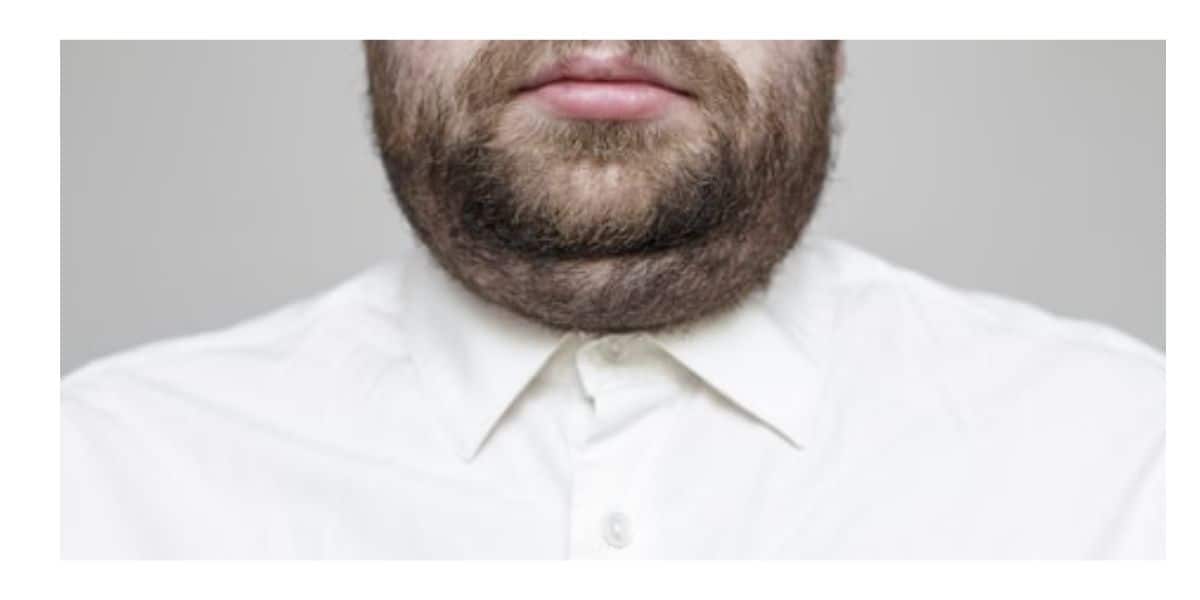Keeping a clean boar bristle beard brush is an essential aspect of your grooming routine. It’s no secret that growing a beard has become increasingly fashionable.
Ownership of a dedicated beard brush has become commonplace among men. In fact, it’s hard to think of a more masculine tool to own.
But many of these men ignore the fact that a proper boar bristle beard brush (Amazon Link) is an intricate piece of equipment that needs proper looking after. Yes, that means regularly cleaning it using a simple, yet structured technique.
This is the technique you’ll be learning today. Keeping your beard brush clean is important for hygienic reasons, as well as to ensure it remains effective for a longer period of time.
Follow this routine and I guarantee that your beard brush will last longer.

What You’ll Need
Here’s your shopping list. As you can see, it’s nothing special. There’s a high likelihood that you’ll have these items lying around your house already.
A cotton swab or cleaning brush
You’ll need something with a head that’s soft and small enough to reach in between the bristles of your beard brush. The tip of a cotton swab will do just fine.
Alternatively, most electric trimmers come with a tiny cleaning brush to clean under the blades. This is perfect for beard brush cleaning purposes.
A small bowl or Tupperware container
Something that can hold some lukewarm water, essentially.
Soap or beard wash
Be careful here. You want a cleaning product that is powerful enough to clean properly, but not so harsh as to damage the integrity of the bristles. A gentle beard wash or baby shampoo is fine.
A small cloth
Like I said – nothing fancy.
How To Clean A Beard Brush In 5 Steps
This routine isn’t complicated – I would challenge anyone who suggests that it is. It shouldn’t take more than a few minutes out of your day.
The way I think of it is this – because a clean beard brush works more effectively, it will save you way more time in the long run.
1. Clean the gaps between the bristles
This is where the tip of a cotton swab or a little cleaning brush comes into play. If you can think of a different item that would work instead, go for it. Just make sure the head is small enough to navigate the little gaps between the bristles and soft enough so as not to damage the wood.
For the sake of this tutorial, let’s presume you’ve gone for a cotton swab.
Holding the handle in between your thumb and index finger, gently run the tip of the swab up and down the valleys of your boar bristles.
As you do this, you’ll notice hairs unclogging, and the tip becoming increasingly dirty from oil, etc. Don’t hesitate to grab a new swab if you think it’s necessary.
Also, don’t spend too long on this part, as the next steps should do most of the heavy lifting. But after you’ve done this for around 30 seconds or so, pick up the brush and do what you can to remove any excess hair you’ve unplugged. Shake, blow, or even use your fingers.
But again, don’t over-do it. It’s just a nice bonus if you can get it pretty clean even before the washing phase.
2. Semi-fill a container with soapy water
This could either be a small bowl or Tupperware container. Ideally, it should be something you don’t mind temporarily contaminating. It’s likely that your family wouldn’t appreciate a casserole being served in the same dish later that evening.
Semi-fill your container of choice with lukewarm water. The temperature is important. If you make the water too hot it could damage the bristles.
Then, grab your cleaning product of choice. Like I mentioned before, something gentle. It should be something you wouldn’t mind putting on your beard hair.
Boar hair is very similar to human hair, so it makes sense that it should be treated with the same level of care.
I would usually go for either a gentle beard wash (Amazon Link) or a baby shampoo. Mix a small amount into your semi-filled contained, using your fingertips to swirl it in.
3. Dip the bristles into the water
The bristles, and only the bristles. The wood will inevitably get slightly wet. But do try and minimize this as much as possible. Getting the wood damp repeatedly, over a long period, will eventually start to damage the integrity of the wood.
So, dip the bristles into the soapy water, and swirl the bristles to build up a lather in the small gaps between them.
You don’t need to do this for very long – another 20 seconds is fine.
Then, remove it and let it sit on a small cloth (bristles up) for around 30 seconds. This should be enough time for the soap to disintegrate any residue in between the bristles.
4. Rinse with water
It’s quite difficult to do this without dampening the wood. The safest way to do it would be to semi-fill another small container (or the same one) with lukewarm water and no soap.
Then, simply dip the bristles into this container and swirl them. This should rinse off the soap while protecting the wood.
5. Dry the beard brush
Remove the bristles from the water and shake to get rid of excess water.
Place the brush bristles down on a small cloth to let it slowly and gradually drip itself dry. Boar hair does retain moisture very well, so it should be left to dry for around a day.
Don’t be tempted to speed up the process by using a blow dryer or anything similar.
That level of heat could be disastrous for those delicate bristles.
This shouldn’t impact your brushing routine too much. If you follow this practice immediately after a brushing session, it should be dry and ready for you before the next morning’s brush.
If you usually like to top up during the day, try using a good beard comb (Amazon Link) for these top-ups instead. They’re usually better for on-the-go styling in any case.
How Often To Clean A Beard Brush
The danger of performing this cleaning ritual too frequently is damaging the integrity of the bristles. Another danger would be dampening the wood and causing it to deteriorate over time.
The trick is to strike the right balance between ensuring you stay hygienic, while also ensuring you don’t damage your tool.
I recommend cleaning your beard brush using this more formal technique once a month.
However, there’s no harm in simply using your cotton swab to unclog the beard brush more frequently. In other words, carrying out the first part of the routine without proceeding to the washing part.
Why Your Beard Brush Smells
This one’s easy. It’s essentially a breeding ground for bacteria. A beard brush is a physical exfoliant. The bristles may be phenomenal for neatening and straightening out beard hair. But they also scrape away at the top layer of skin.
This top layer of skin contains dirt, as well as dead skin cells. Another thing the bristles are excellent at is re-distributing natural sebum oil, as well as beard oils, balms, waxes, pomades and whatever else.
Unfortunately, this residual mixture isn’t always immediately visible after a brushing session. Because of this, it tends to get ignored. Bacteria starts to build up, and it’s quite common for the smell to become the first thing you notice.
Don’t let it last. Clean it as soon as you can. The worst thing is that this awful mixture is smeared across your face every time you brush your beard.
How Often Should You Replace Your Beard Brush
Of course, this does depend on how often you use it. A well-looked after beard brush could last years. Since I recommend starting to brush early, the same beard brush may very well see you through your entire bearded journey.
It makes more sense to suggest when you should consider replacing your boar bristle beard brush. If the bristles just don’t feel as strong or stiff anymore, it’s quite likely they won’t be as effective at brushing.
You’ll start to notice a deterioration in the results you achieve. Also look out for discoloration in the wood, as this also suggests it may be time for you to consider buying a new beard brush.
Should You Just Get A Synthetic Beard Brush Instead?
Indeed, a synthetic beard brush with nylon bristles doesn’t require this sort of upkeep. There’s no issue with simply running the brush under the faucet after each usage. You won’t do any significant damage. Plus, they’re cheaper to buy – tempting right?
Don’t fall for it. Although you may save a few dollars by choosing synthetic over boar bristle, it isn’t worth it. Overall, a quality boar bristle beard brush will last longer.
This is simply due to build quality and craftsmanship.
But speaking specifically about brushing ability, there is no comparison. For one, boar bristles are far more effective at re-distributing natural sebum oil, as well as grooming products. Overall, this leads to a much healthier-looking and impressive beard.
Boar hair is also very similar to human hair. Because of this, boar bristles can navigate through beard hair much more efficiently than nylon bristles.
This means less tugging and pulling, which means fewer breakages, split-ends, and unnecessary hair loss.
Conclusion
There you have it – the ins and outs of cleaning a beard brush. How to do it, when to do it, and most importantly – why to do it. I do feel that knowing why will be the most important factor that determines whether or not you continue to do it.
Unfortunately, there’s no substitute for it. The fact that you’ve chosen a boar bristle beard brush already suggests that you’re serious about beard grooming. It suggests that you’re serious about grooming in general. Cleaning it doesn’t take long – this routine was constructed with a busy man in mind.
Also, this article was built to help you draw as much life out of your beard brush as possible. To ensure that it stays extremely effective for as long as possible.
If you follow this practice regularly and routinely, there’s no reason why it won’t be possible.
Ready Sleek founder. Obsessed with casual style and the minimalist approach to building a highly functional wardrobe. Also a fan of classic, vintage hairstyles.






